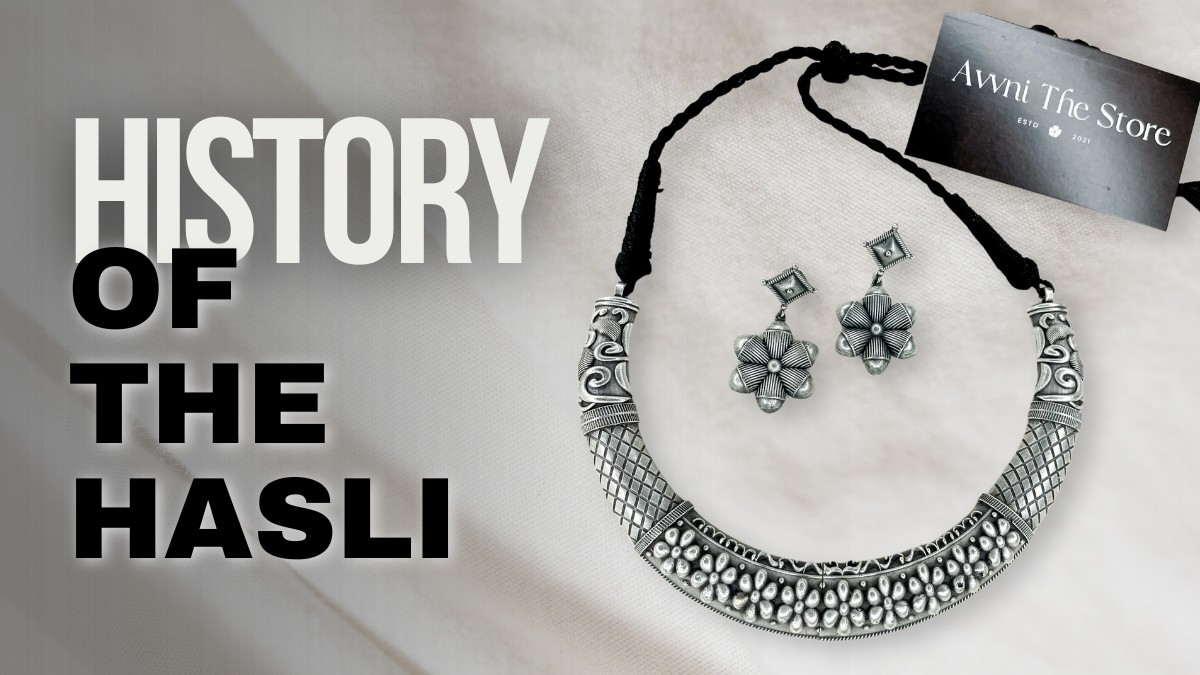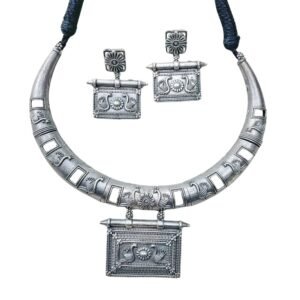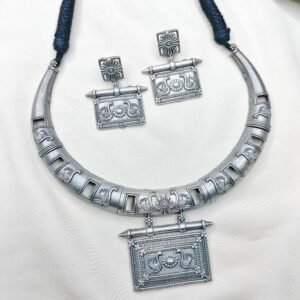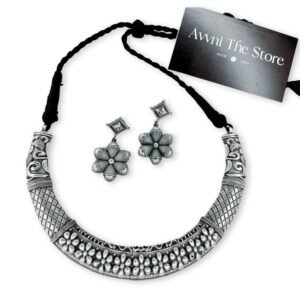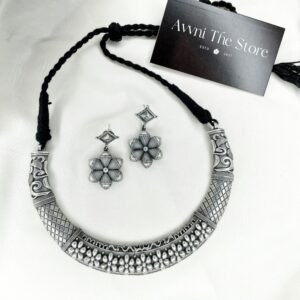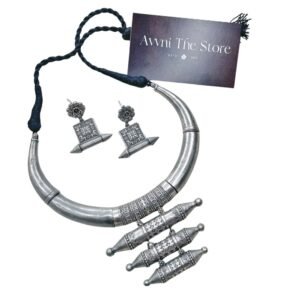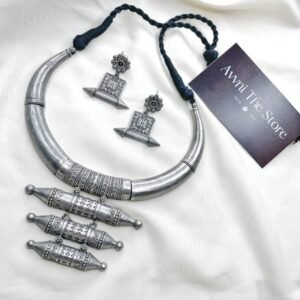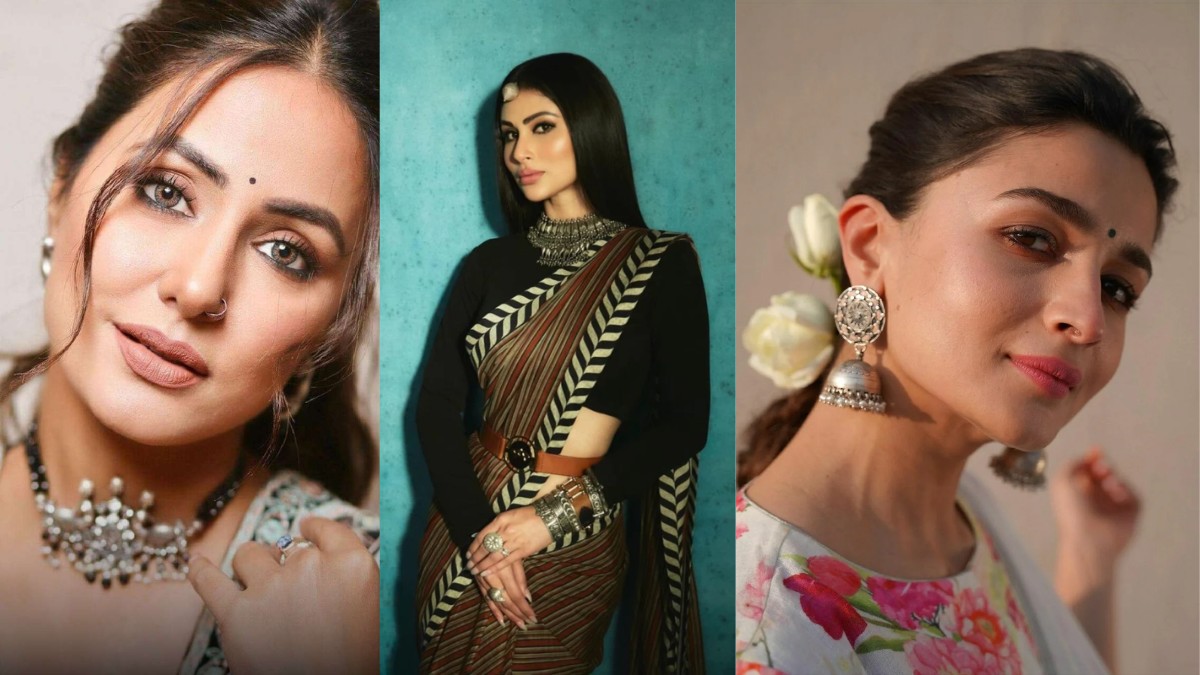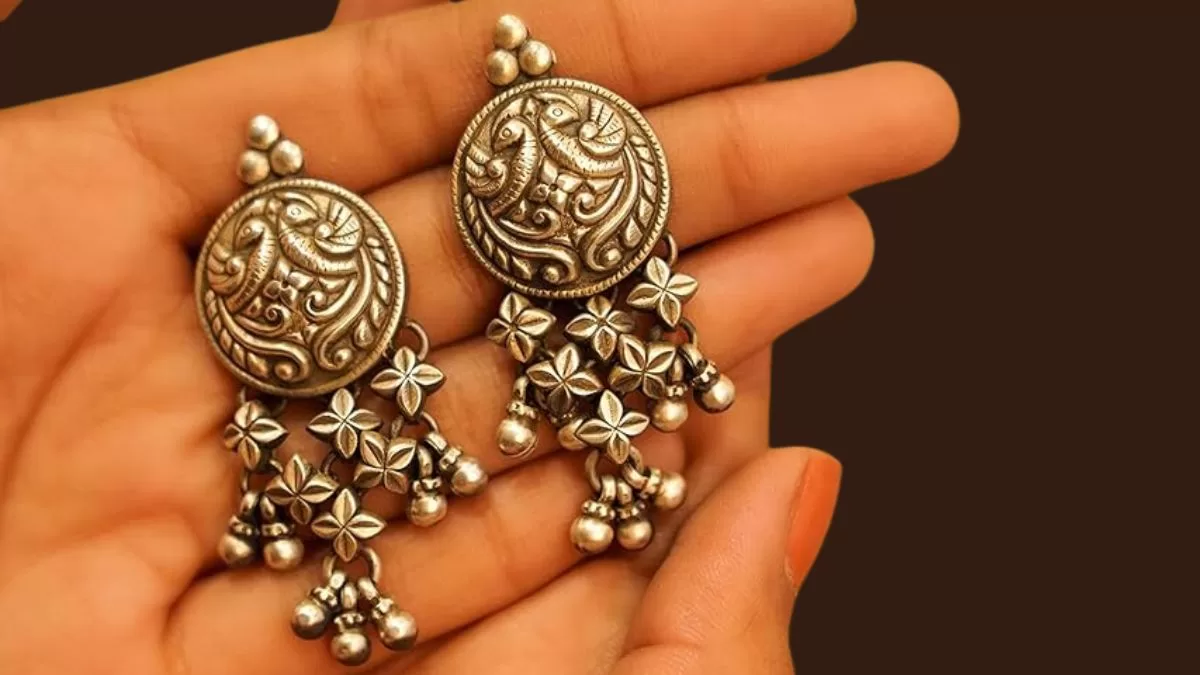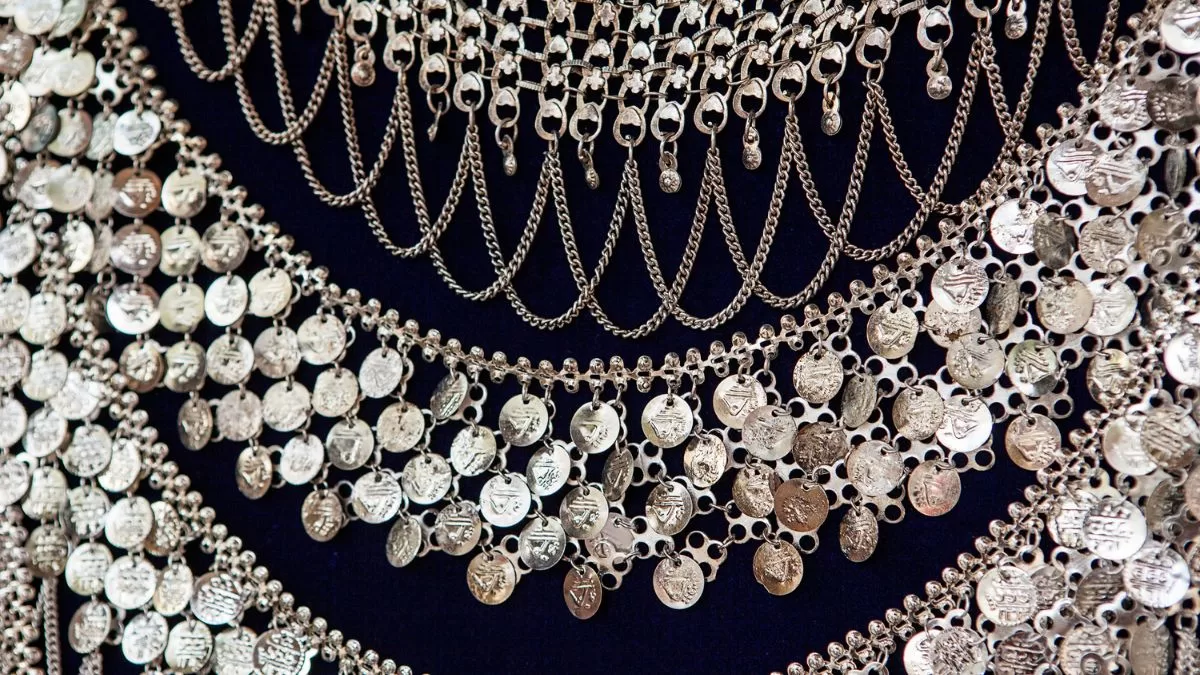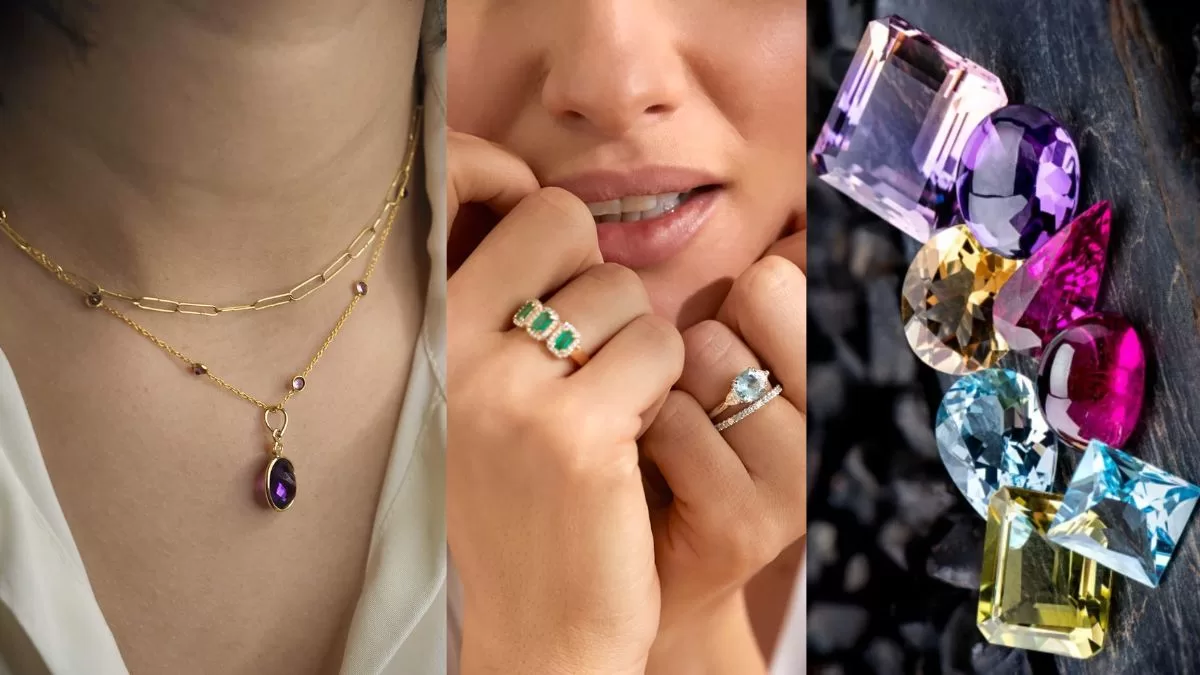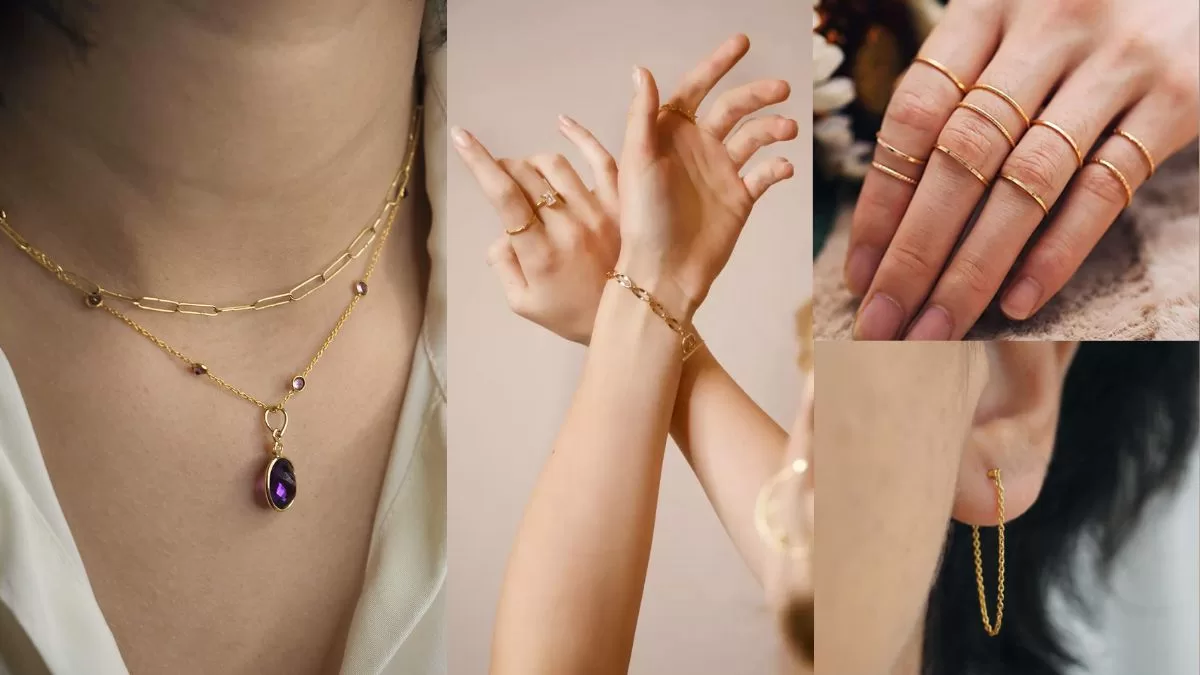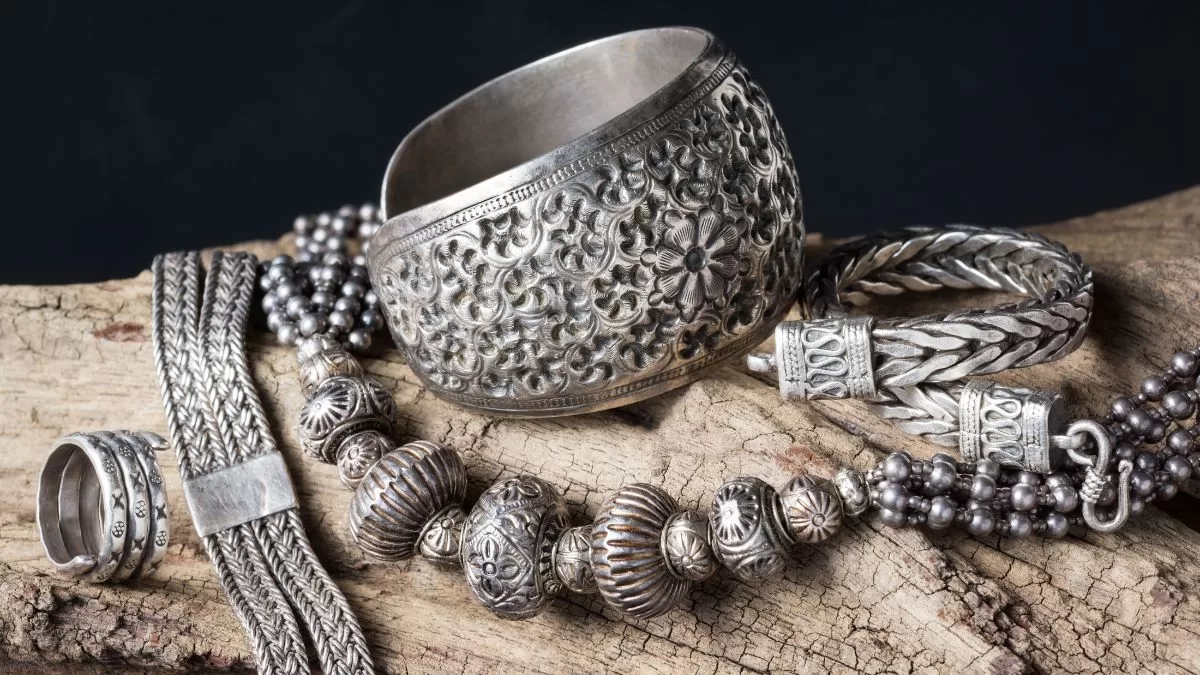The Fascinating History of the Hasli Necklace: A Piece of History Around Your Neck
The Hasli necklace is a timeless piece of jewellery with a rich cultural history that spans centuries. This iconic, choker-style necklace has been a symbol of elegance, strength, and heritage. Whether it’s worn for special occasions or as an everyday accessory, the Hasli carries a story of tradition and craftsmanship. Let’s dive into the history of this beautiful jewellery piece and discover why it continues to captivate hearts today.
What is a Hasli Necklace?
The Hasli necklace is a traditional piece of jewellery, typically crafted from metal and worn close to the neck. Its origins can be traced to ancient India, where it was worn by women as a statement piece. Often made from materials like gold, silver, brass, and copper, the Hasli was not just an ornament, but a symbol of cultural identity and status. Over the years, its design evolved, and it became an essential part of ethnic attire, cherished by royalty, tribal communities, and brides.
A Rich History of the Hasli Rooted in Ancient Traditions
The Hasli necklace has deep roots in the history and culture of South Asia. It was originally worn by women to signify their status, strength, and beauty. In ancient times, the Hasli was often associated with royalty and was made from precious metals such as gold and silver. It was considered a luxurious and regal accessory, worn by queens and noblewomen as part of their traditional wardrobe.
The design of the Hasli often incorporated symbols of protection, spirituality, and fertility. These motifs reflected the deep connection between jewellery and culture. It was believed that wearing a Hasli would provide protection from negative forces, bringing good fortune and spiritual strength. This made the Hasli not only a decorative piece but also a powerful symbol in the lives of those who wore it.
The Art of Traditional Metalwork: Handcrafted Excellence
The creation of a Hasli necklace was a delicate and intricate process that required exceptional skill in metalworking. Each piece was handcrafted by artisans, often using techniques passed down through generations. The craftsmanship involved in making a Hasli is what set it apart from other types of jewellery. Artisans would meticulously handcraft each Hasli, ensuring no two pieces were exactly alike. The designs were often complex, featuring engravings, embossing, and even gemstone embellishments that added a personal touch.
This craftsmanship highlighted the value of traditional metalwork, a technique that has been at the heart of South Asian jewellery for centuries. The Hasli was more than just a piece of jewellery; it was a representation of the dedication and skill of artisans, and a reflection of the cultural heritage they preserved.
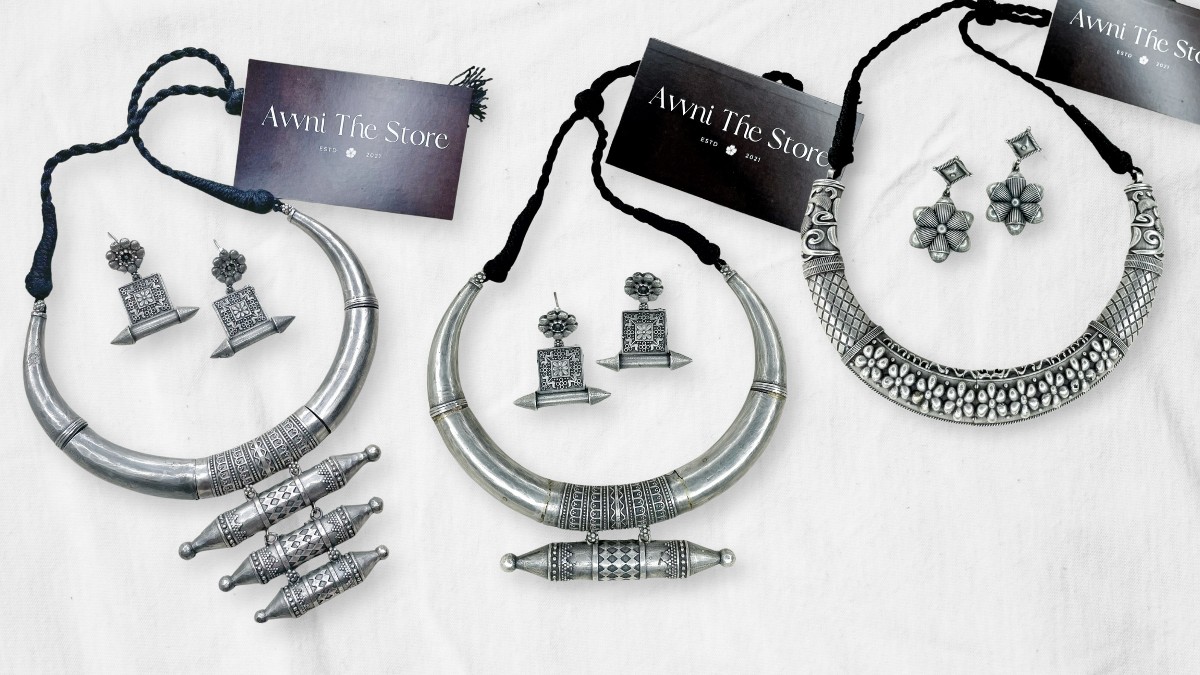
The Decline of Hasli: From Royalty to the Masses
As time went on, the popularity of Hasli necklaces began to fade. The rise of mass-produced jewellery and the influence of Western fashion trends led to the decline of many traditional jewellery styles, including the Hasli. However, the art of creating these handcrafted pieces did not completely vanish. In recent years, there has been a resurgence in interest for traditional crafts and traditional metalwork, with younger generations seeking to reconnect with their cultural roots.
This renewed interest in the Hasli necklace reflects a growing appreciation for handmade jewellery and the unique beauty that comes from skilled craftsmanship. Many modern jewellery designers are now reviving the Hasli, creating contemporary versions that still honor its traditional roots.
The Comeback of Hasli in Modern Fashion
In today’s fashion world, the Hasli necklace is making a bold comeback. This time, it’s not just worn by royalty or brides, but by fashion-forward individuals who appreciate the blend of traditional metalwork with modern styling. The versatility of the Hasli allows it to be styled with both traditional outfits, such as sarees and lehengas, and more contemporary clothing like t-shirts and dresses.
This fusion of old and new is why the Hasli has become a staple in the modern jewellery box. It’s not just a statement piece; it’s a celebration of history, craftsmanship, and cultural pride. Whether worn casually or for special occasions, the Hasli necklace adds a unique touch to any outfit, making it a must-have for those who love ethnic jewellery with a modern twist.
Why You Should Embrace the Hasli Necklace
The Hasli necklace is more than just a piece of jewellery. It’s a connection to the past, a symbol of rich cultural heritage, and a work of art that deserves to be celebrated. By wearing a Hasli, you’re not only embracing a piece of tradition but also supporting the artisans who keep these timeless techniques alive. Whether you’re looking to make a bold fashion statement or add a meaningful accessory to your collection, the Hasli necklace offers something special that transcends trends.
A Piece of History Around Your Neck
From its ancient beginnings as a symbol of power and protection to its revival as a modern-day fashion statement, the Hasli necklace has remained a timeless treasure. Its intricate design, rooted in traditional metalwork, continues to captivate people around the world. By investing in a Hasli necklace, you’re not just buying a piece of jewellery; you’re embracing a rich cultural legacy and supporting the revival of traditional crafts that have stood the test of time.
Embrace the elegance, craftsmanship, and history of the Hasli necklace, and add a touch of tradition to your modern wardrobe today!
Explore the timeless charm of the Hasli necklace and bring a piece of history into your jewelry collection. At Avvni The Store, we celebrate heritage through our carefully crafted pieces that blend tradition with modern elegance. Shop our exclusive Hasli designs on Amazon or Flipkart, and stay inspired by following us on Instagram for the latest collections, styling tips, and behind-the-scenes craftsmanship.
Shop Our Hand-crafted Hasli Collection
-
Avvni Rustic Tribal Oxidised Hasli Necklace Set
Original price was: ₹3,999.00.₹1,189.00Current price is: ₹1,189.00. Add to cart -
Avvni Rustic Bloom Oxidised Hasli Necklace Set
Original price was: ₹4,399.00.₹1,279.00Current price is: ₹1,279.00. Add to cart -
Avvni Tribal Heritage Long Oxidised Hasli Set
Original price was: ₹4,399.00.₹1,369.00Current price is: ₹1,369.00. Add to cart -
Avvni Antique Tribal Hasli Set
Original price was: ₹1,299.00.₹489.00Current price is: ₹489.00. Add to cart
What is the history of Hasli?
The Hasli necklace has ancient origins in India, traditionally worn by royalty and tribal communities. It’s a symbol of strength, beauty, and cultural heritage, crafted using metals like gold, silver, and brass.
What is the meaning of Hasli?
The term Hasli comes from the Hindi word for “collarbone.” It refers to a close-fitting necklace that rests on the collarbone and is a key part of Indian jewellery tradition.
What materials are used in making Hasli necklaces?
Hasli necklaces are typically made from silver, gold, brass, or copper, often with intricate designs or gemstone embellishments.
How is a Hasli necklace crafted?
Crafted by skilled artisans, Hasli necklaces are handmade using traditional metalworking techniques, with each piece featuring unique designs.
Why is Hasli experiencing a revival?
The Hasli is being revived due to increased interest in traditional crafts and sustainable fashion, with more people appreciating its cultural and handcrafted value.
How do I style a Hasli necklace with modern outfits?
A Hasli pairs beautifully with both ethnic wear like sarees and lehengas, as well as casual or contemporary outfits, making it a versatile accessory.
Where can I buy authentic handcrafted Hasli jewellery?
Authentic Hasli necklaces are available from specialized online stores or artisanal boutiques that focus on traditional Indian jewellery and craftsmanship.
Also Read: Handcrafted Haslis: The Lost Art of Metalwork & Why It Deserves a Comeback
Also Read: A Guide to Oxidised Jewellery: The Allure of Aged Beauty


